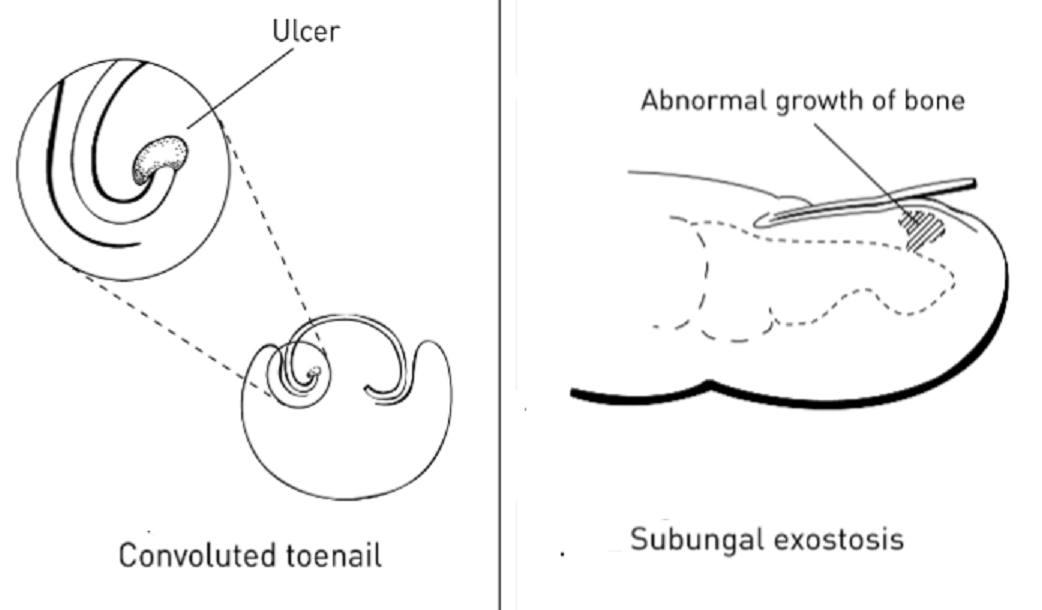Convoluted nail
/kɑnvʌlutʌd/ /neɪl/
1. [noun] convoluted toenails are where the nail plate tends to roll up into itself. Grossly deformed nails like this can be due to an abnormal bony outgrowth withinthe toe (subungual exostosis). But are more often caused by a past history of a severe injury to the nail-germinating matrix. TREATMENT Convoluted toenails require a careful trimming technique because of the bud of sensitive pinched nail bed protruding from under the nail plate. Similar problems to that of involuted toenail can occur. So the development of hard skin and corns along the nail border also happens. Treatment is not too dissimilar to that for involuted toenail. However, due to increased nail bulk and strangulation of nail bed tissue, ulcer formation is more commonly seen with this condition. Again, for the problematic convoluted toenail, surgical intervention can be a better method for resolving this condition in the long-term
Source: http://biomechanicsfootlab.com/wp-content/uploads/2016/12/Toenail-Trouble-good-pictures-.pdf

Frequently Asked Questions
How does a convoluted toenail differ from other similarly described nail issues?
A convoluted toenail is characterized by the nail plate rolling inward, often linked to historical trauma or structural changes beneath the nail. This contrasts with other terms that describe inward growth without the distinct rolled appearance.
What everyday foot movements might highlight the appearance of a convoluted toenail?
Activities like walking on uneven surfaces or tight footwear can subtly emphasize the rolled appearance of a convoluted toenail. These daily actions may make it easier to notice unusual nail shapes.
How can understanding the origin of the term 'convoluted' help visualize this nail condition?
The word 'convoluted' comes from the Latin 'convolutus,' meaning rolled or coiled. This etymology mirrors the visual twist of the nail plate, aiding in recognizing the condition through its descriptive language.
Why might someone confuse a convoluted toenail with other nail deformities?
Due to similar features such as inward curling, a convoluted toenail might be mistaken for other nail conditions. It is unique because the deformation often results from a past injury to the nail matrix or underlying structural changes.